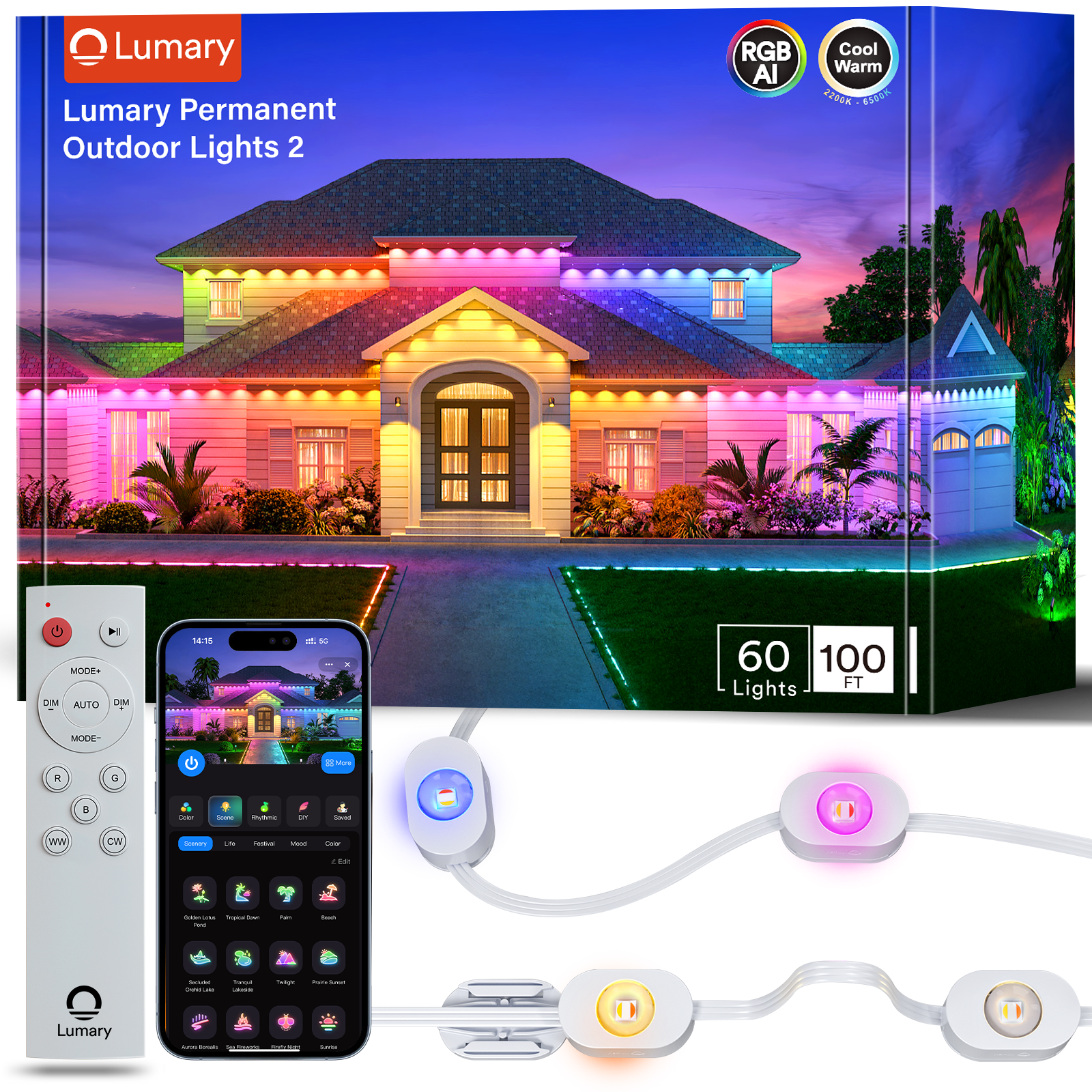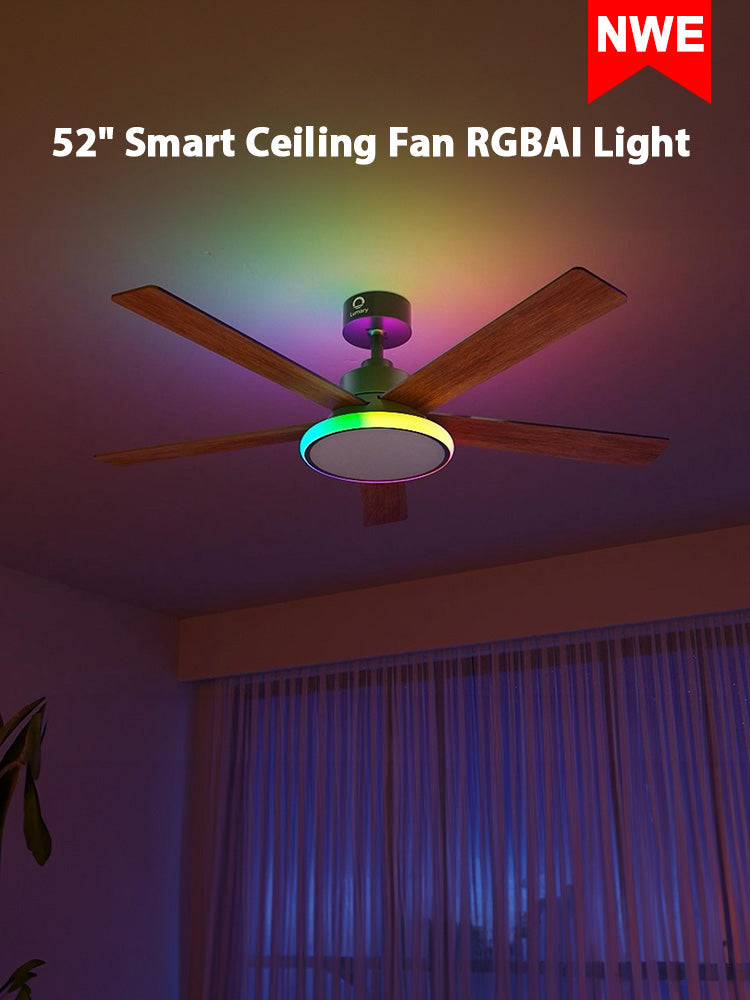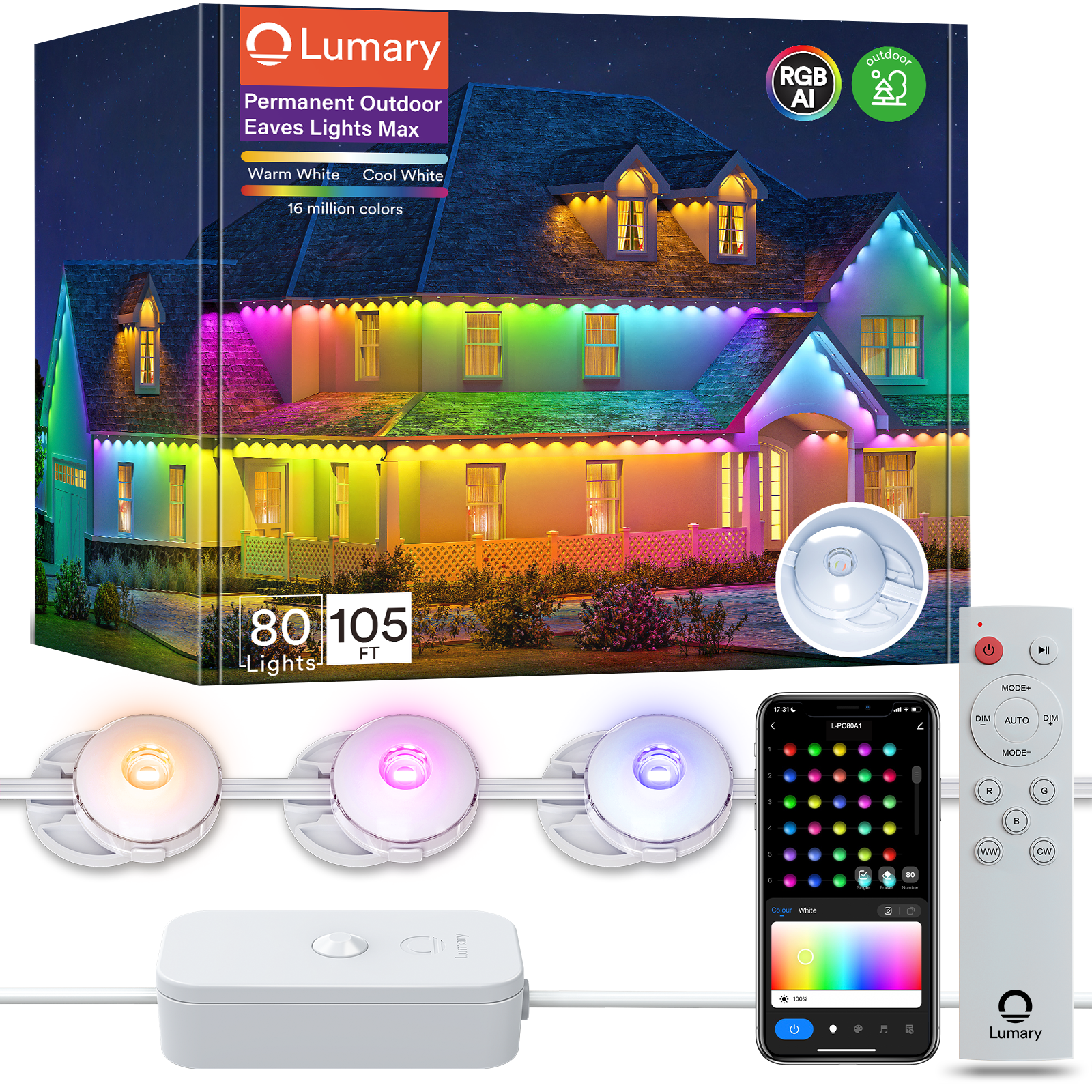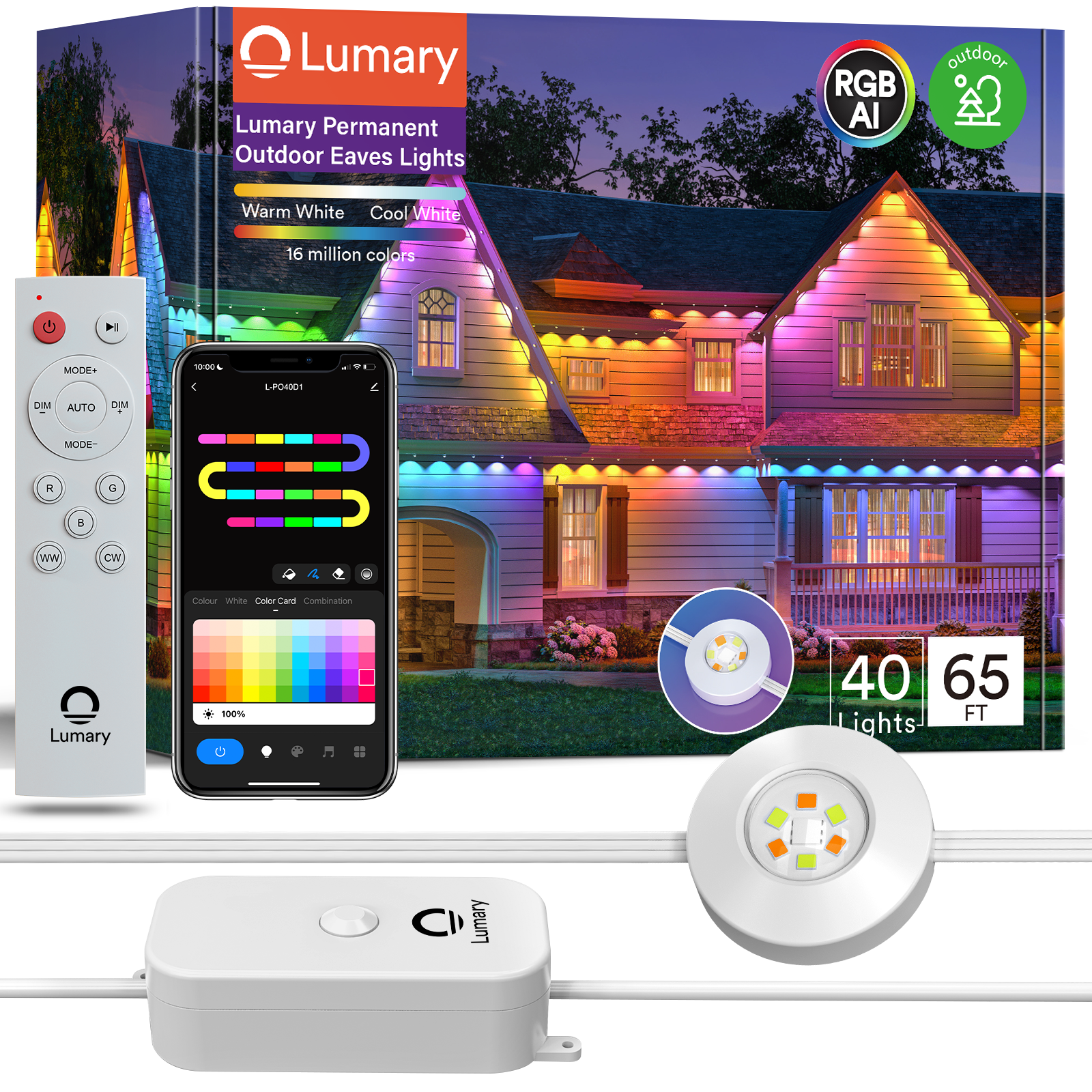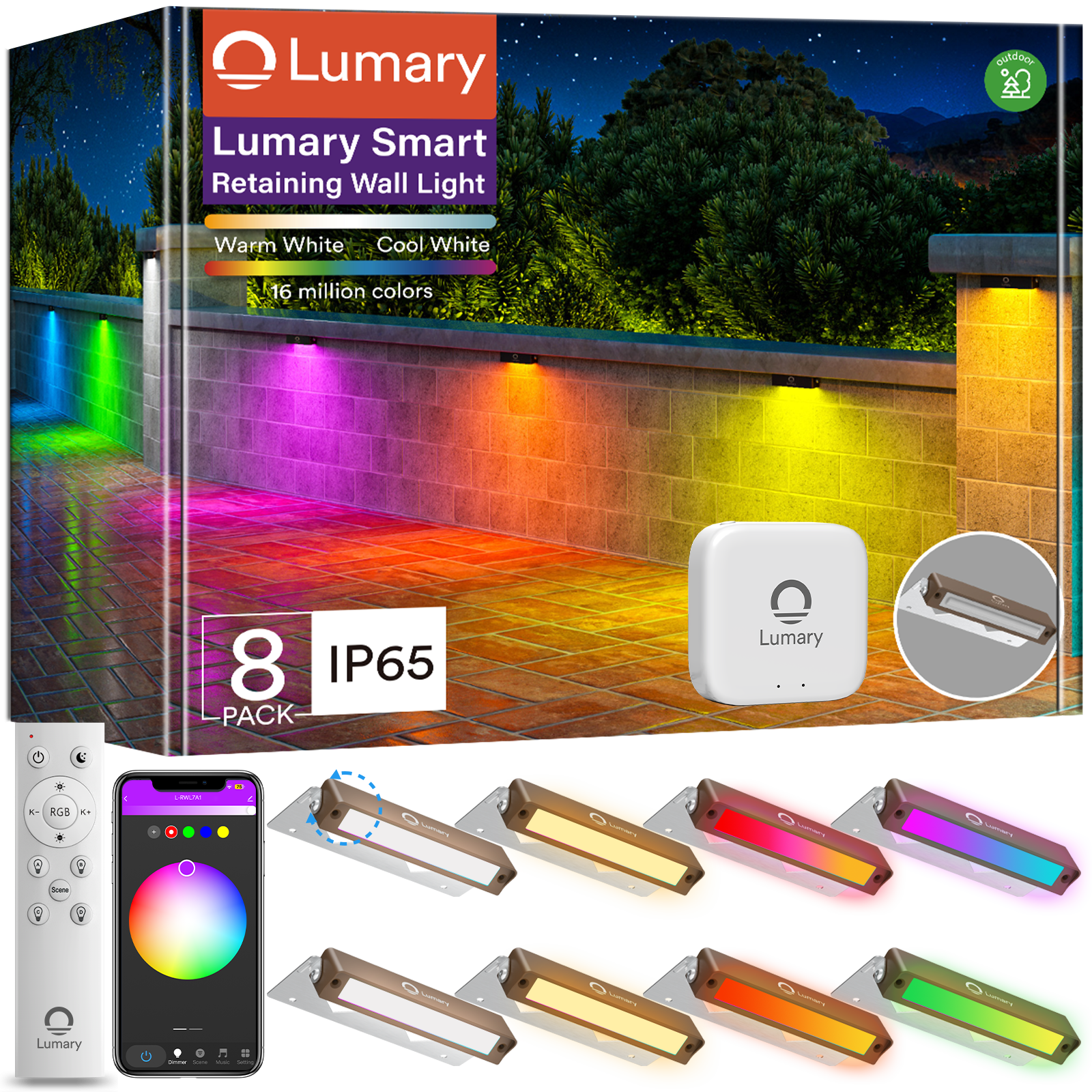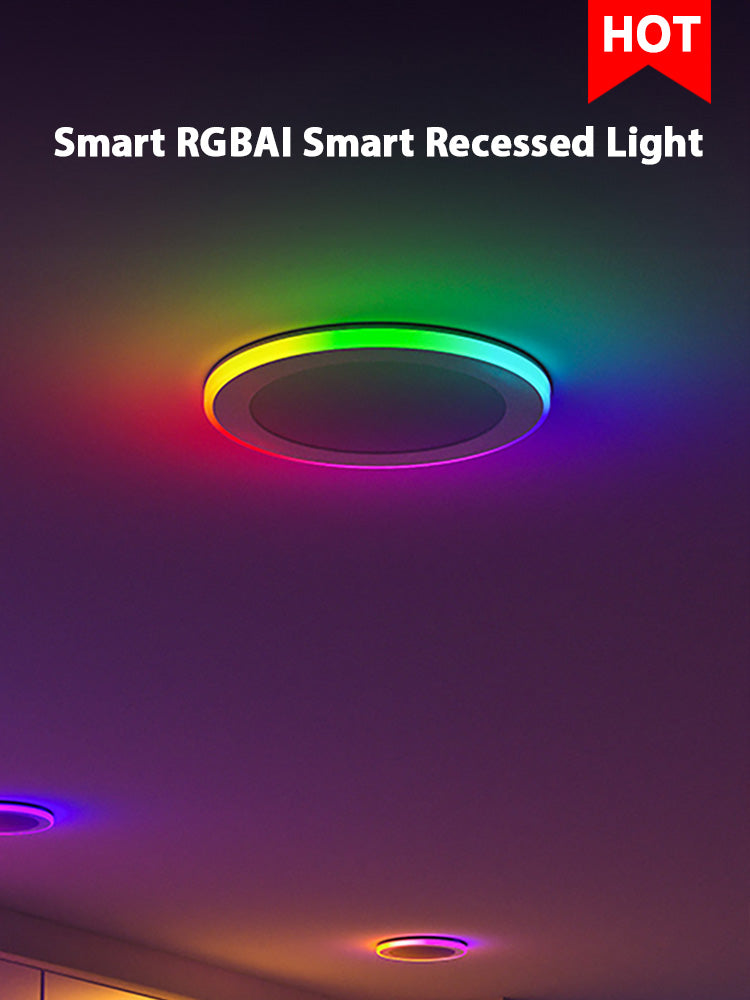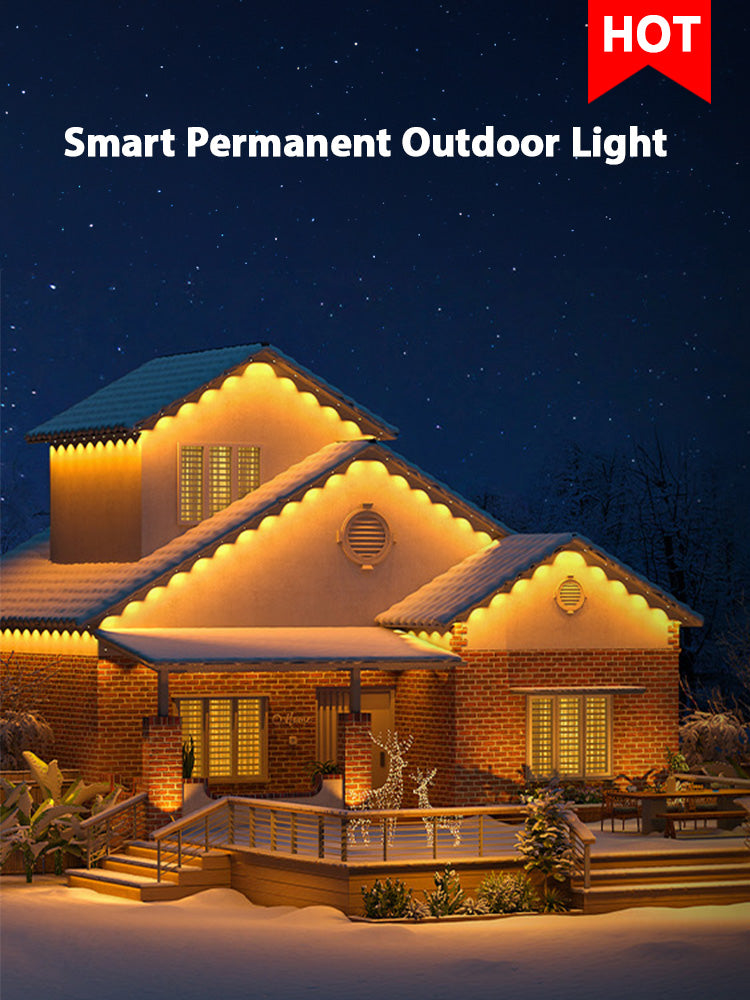Outdoor lighting for house transforms your space into a safer, more functional, and visually appealing environment. It not only deters intruders but also enhances the beauty of your home after sunset. A well-lit yard or pathway reduces accidents and creates a welcoming atmosphere for guests. Studies show that proper lighting can lower nighttime crime by 36%, making it an essential addition to any home. Whether you want to highlight your landscaping or improve visibility, choosing the right exterior lighting ensures your outdoor areas shine with purpose and style.
Key Takeaways

-
Enhance safety and security by installing motion-activated lights and floodlights around entry points and large outdoor areas.
-
Choose the right type of lighting for your needs: path lights for navigation, spotlights for highlighting features, and well lights for subtle illumination.
-
Consider energy-efficient options like LED and solar-powered lights to save on electricity bills and reduce maintenance.
-
Match the brightness of your outdoor lights to their purpose, using 100-200 lumens for path lights and 2000-3000 lumens for floodlights.
-
Select fixtures that complement your home's architecture to create a cohesive and visually appealing outdoor space.
-
Utilize timers and motion sensors to optimize energy use and ensure lights are only on when needed.
-
Regularly maintain your outdoor lighting by cleaning fixtures and checking for damage to keep them functional and bright.
Types of Outdoor Lighting for House
Outdoor lighting plays a vital role in transforming your home's exterior into a functional and inviting space. From enhancing safety to showcasing your landscaping, the right lighting can make all the difference. Let’s explore the various types of outdoor lighting and how they can elevate your home.
Security Lighting
Motion-activated lights for deterring intruders.
When it comes to safety and security lighting, motion-sensor lights are a must-have. These lights automatically turn on when they detect movement, startling potential intruders and alerting you to any activity around your home. They’re not just practical but also energy-efficient, as they only activate when needed. Install them near entry points like doors, windows, or garages to keep your property secure.
Floodlights for illuminating large areas.
Floodlights are perfect for brightening up expansive outdoor spaces. With their wide beam angle, they provide excellent visibility, making them ideal for driveways, backyards, or parking areas. You can adjust their angle to cover specific zones, ensuring no dark corners remain. Pairing floodlights with motion sensors enhances their functionality, offering both convenience and added security.
Landscape Lighting
Spotlights for highlighting trees, plants, or architectural features.
Spotlights are a fantastic choice for drawing attention to specific elements in your yard. Use them to illuminate tall trees, unique plants, or even architectural details like columns or statues. Their focused beam creates a dramatic effect, adding depth and character to your outdoor spaces. Adjust the angle to achieve the perfect highlight for your chosen feature.
Well lights for subtle, ground-level illumination.
For a more understated approach, consider well lights. These fixtures sit flush with the ground, providing soft, upward lighting that enhances your landscape without overwhelming it. They’re great for lining pathways, accentuating flower beds, or creating a gentle glow around your patio. Well lights blend seamlessly into the environment, offering a clean and polished look.
Path Lighting
Lights for walkways, driveways, and garden paths.
Path lighting ensures safe navigation while adding charm to your outdoor areas. Place these lights along walkways, driveways, or garden paths to guide guests and prevent trips or falls. Choose fixtures that complement your home’s style for a cohesive look. Properly spaced path lights create a welcoming ambiance and improve visibility.
Solar-powered options for eco-friendly lighting.
Solar-powered path lights are an excellent choice for those seeking sustainable solutions. These lights harness sunlight during the day and illuminate your paths at night without increasing your energy bill. They’re easy to install and require minimal maintenance, making them a hassle-free addition to your outdoor lighting setup.
Accent Lighting
Decorative lights for creating ambiance.
Accent lighting adds a touch of personality to your outdoor spaces. Decorative lights, such as uplights or small spotlights, create a warm and inviting atmosphere. Use them to highlight unique features like garden sculptures, water fountains, or textured walls. These lights not only enhance the visual appeal of your home but also make your outdoor areas feel cozy and welcoming. Choose designs that match your style, whether modern, rustic, or traditional, to ensure a cohesive look.
String lights and lanterns for patios and decks.
String lights and exterior lanterns are perfect for transforming patios and decks into magical retreats. Drape string lights across pergolas or wrap them around trees to create a whimsical vibe. Exterior lanterns, on the other hand, bring a classic charm to your seating areas. Place them on tables or hang them from hooks to add soft, ambient lighting. These options are ideal for hosting evening gatherings or simply enjoying a quiet night outdoors.
Ceiling and Wall-Mounted Lighting
Porch lights for entryways.
Porch lights are essential for illuminating your entryways. They provide safety by brightening up the area around your front door and help guests find their way. Exterior pendants are a stylish choice for covered porches, offering both functionality and elegance. Select fixtures that complement your home’s design to create a polished and inviting entrance.
Sconces for walls and outdoor seating areas.
Exterior sconces are a versatile option for wall-mounted lighting. Install them along walls to light up pathways or near outdoor seating areas to create a relaxing ambiance. These fixtures come in various styles, from sleek and modern to vintage-inspired designs, allowing you to find the perfect match for your home. Exterior sconces not only enhance visibility but also add a decorative element to your outdoor spaces.
Key Outdoor Lighting Considerations
When selecting outdoor lighting, you need to think beyond just style. The right choices can enhance safety, improve functionality, and elevate the beauty of your home. Let’s dive into some essential considerations to help you make informed decisions.
Power Options
Solar-powered vs. electric lighting.
Choosing between solar-powered and electric lighting depends on your needs and preferences. Solar-powered outdoor lighting is an eco-friendly option that uses sunlight to charge during the day and illuminates your space at night. These lights are easy to install since they don’t require wiring, making them perfect for pathways, gardens, or areas far from power sources. On the other hand, electric lighting offers consistent brightness and reliability, especially in shaded areas or regions with limited sunlight. Electric fixtures are ideal for spaces requiring steady illumination, like security or landscape lighting.
Battery-operated options for flexibility.
Battery-operated lights provide unmatched flexibility. These fixtures don’t rely on wiring or sunlight, allowing you to place them anywhere. They’re great for temporary setups, such as outdoor gatherings or holiday decorations. Many battery-operated lights now come with energy-efficient LED bulbs, extending battery life and reducing maintenance. For added convenience, look for models with timers or remote controls to manage your lighting effortlessly.
Lumens and Brightness
How to choose the right brightness for different areas.
The brightness of your outdoor lighting should match the purpose of each area. Measured in lumens, brightness levels vary depending on the fixture type. For example:
-
Path lights typically require 100-200 lumens to ensure safe navigation without overwhelming the space.
-
Dusk-to-dawn lights for porches or entryways often need 800-1000 lumens to provide clear visibility.
-
Floodlights or security lights may demand 2000-3000 lumens to cover large areas effectively.
By tailoring the brightness to each zone, you can achieve both functionality and comfort.
Balancing functionality with ambiance.
Striking the right balance between functionality and ambiance is key. Bright lights work well for security and task-oriented areas, but softer lighting creates a welcoming atmosphere. For instance, dusk-to-dawn lights with dimmable settings allow you to adjust brightness levels based on the time of day or occasion. This flexibility ensures your outdoor spaces remain practical while maintaining a cozy vibe.
Color Temperature
Warm vs. cool lighting tones.
The color temperature of your lighting sets the mood for your outdoor spaces. Measured in Kelvin (K), warm tones (2700K-3000K) emit a soft, yellowish glow, perfect for creating a relaxing and inviting ambiance. Cool tones (4000K-5000K) produce a bright, white light that enhances visibility and works well for task-oriented areas like driveways or garages. Choosing the right tone depends on the purpose of the space and the atmosphere you want to create.
Matching color temperature to your home's style.

Your home’s exterior design plays a significant role in selecting the right color temperature. Warm lighting complements traditional or rustic homes, adding a touch of charm and coziness. Cool lighting suits modern or minimalist designs, highlighting clean lines and sleek finishes. By aligning the color temperature with your home’s style, you can achieve a cohesive and polished look.
Pro Tip: Consider using dusk-to-dawn lights with adjustable color temperatures. These fixtures adapt to different needs, offering warm tones for evening relaxation and cool tones for early morning tasks.
Weather Ratings
Wet-rated fixtures for exposed areas.
When choosing outdoor lighting, you need to ensure the fixtures can handle the elements. Wet-rated fixtures are designed to withstand direct exposure to rain, snow, and other harsh weather conditions. These lights are perfect for areas like open patios, uncovered walkways, or garden spaces where they face constant exposure to moisture. Wet-rated options not only provide reliable performance but also maintain their appearance over time. For example, smart outdoor lighting with a high waterproof rating can enhance your yard’s safety and style, even in extreme weather.
Damp-rated fixtures for covered spaces.
Damp-rated fixtures work best in areas that are sheltered but still exposed to occasional moisture. Think of spaces like covered porches, screened patios, or under eaves. These fixtures resist humidity and light splashes of water, making them ideal for semi-protected outdoor areas. If you’re hosting a dinner party on your porch or relaxing in an outdoor seating area, damp-rated wall sconces or ceiling lights can create a cozy ambiance while ensuring durability. Always match the fixture’s rating to its location to avoid damage and ensure long-lasting performance.
Durability and Materials
Rust-resistant and weatherproof materials.
Outdoor lighting must endure changing weather conditions, so selecting fixtures made from durable materials is crucial. Look for rust-resistant metals like aluminum or stainless steel, which can handle rain and humidity without corroding. Weatherproof finishes add an extra layer of protection, ensuring your lights stay functional and attractive for years. For instance, outdoor lighting systems often feature UV-resistant coatings to prevent fading under the sun. By investing in high-quality materials, you’ll save money on replacements and keep your outdoor spaces looking polished.
Long-lasting LED options like the Lumary Permanent Outdoor Lights Max.
Durability isn’t just about materials—it’s also about the technology inside your lights. LED fixtures, such as the Lumary Permanent Outdoor Lights Max, offer exceptional longevity and energy efficiency. These lights boast a lifespan of approximately 25,000 hours, meaning you won’t have to worry about frequent replacements. With features like customizable brightness and color settings, they adapt to any occasion, from festive holidays to everyday use. Their IP67 waterproof rating ensures they perform flawlessly in rain, snow, or extreme temperatures. Plus, their innovative detachable base makes maintenance a breeze. Whether you’re illuminating your landscape or adding flair to your patio, these LEDs combine style, functionality, and resilience.
Pro Tip: Pair durable fixtures with dark-sky compliant designs to reduce light pollution and create a more eco-friendly outdoor environment.
Practical Tips for Selecting Outdoor Lighting
When it comes to outdoor lighting, making the right choices can transform your home’s exterior into a functional and visually stunning space. Here are some of the best selection tips to guide you.
Matching Lighting to Your Home's Style
Choosing fixtures that complement your home's architecture.
Your home’s architecture sets the tone for your lighting choices. For a modern home, sleek and minimalistic fixtures work best. Traditional homes benefit from classic lanterns or ornate sconces. If your home has a rustic charm, consider fixtures with natural finishes like bronze or copper. Matching the style of your outdoor lighting fixture to your home’s design creates a cohesive and polished look.
Balancing aesthetics with functionality.
While style is important, functionality should never take a backseat. Choose fixtures that not only look good but also serve a purpose. For instance, path lights enhance safety while adding a decorative touch. Similarly, porch lights brighten entryways and make your home more inviting. Striking the right balance ensures your lighting is both practical and visually appealing.
Energy Efficiency
Benefits of LED and solar-powered lights.
Energy-efficient lighting options like LED and solar-powered lights are game-changers. LED outdoor light bulbs last up to 50,000 hours, reducing the need for frequent replacements. They consume less energy, saving you money on electricity bills. Solar-powered lights, on the other hand, harness sunlight during the day and illuminate your space at night. These lights don’t require wiring, making installation a breeze. With just six hours of direct sunlight daily, solar lights can shine from dusk to dawn.
Using timers and motion sensors to save energy.
Smart outdoor lights equipped with timers and motion sensors take energy efficiency to the next level. Timers allow you to schedule when your lights turn on and off, ensuring they’re only active when needed. Motion sensors activate lights when movement is detected, conserving energy while enhancing security. These features not only save power but also add convenience to your daily routine.
Placement and Layering
Strategically placing lights for maximum impact.
The placement of your lights can make or break your outdoor lighting setup. Position path lights along walkways and driveways to guide visitors safely. Use floodlights to cover large areas like backyards or parking spaces. Accent lights can highlight architectural features or landscaping elements. By placing lights strategically, you ensure every corner of your outdoor space serves its purpose.
Combining different types of lighting for a layered effect.
Layering your lighting creates depth and dimension in your outdoor spaces. Combine ambient, task, and accent lighting to achieve a balanced look. For example, use string lights for a soft glow on your patio, spotlights to highlight trees, and sconces to brighten seating areas. This approach not only enhances functionality but also adds a touch of elegance to your exterior lighting design.
Pro Tip: Opt for dark-sky compliant fixtures to minimize light pollution. These fixtures focus light downward, preserving the night sky while keeping your outdoor areas well-lit.
Installation and Maintenance Tips for Exterior Lighting
Installation Basics
Hiring a professional vs. DIY installation.
When it comes to installing outdoor lighting, you have two main options: hiring a professional or doing it yourself. If you’re confident in your skills and the project is straightforward, DIY installation can save you money. Solar-powered lights or battery-operated fixtures are especially easy to set up since they don’t require wiring. However, for more complex installations, like hardwired electric lights or systems requiring precise placement, hiring a professional ensures safety and proper functionality. Professionals have the expertise to handle wiring, meet local codes, and avoid potential hazards.
Pro Tip: If you’re installing wet-rated fixtures in exposed areas, a professional can ensure they’re sealed correctly to withstand rain and snow.
Ensuring proper wiring and safety measures.
Safety should always come first during installation. For electric fixtures, use outdoor-rated wires and connectors to prevent damage from moisture or temperature changes. Ensure all connections are secure and insulated to avoid short circuits. If you’re working with wet or damp-rated fixtures, double-check that they’re installed in the appropriate environment. Wet-rated lights can handle direct exposure to rain, while damp-rated ones should stay under covered areas like porches. Always turn off the power at the breaker before starting any electrical work.
Quick Reminder: Look for fixtures with an IP rating (Ingress Protection) to confirm their resistance to dust and water. For example, an IP67 rating means the fixture is fully protected against dust and can withstand immersion in water.
Maintenance Tips
Cleaning fixtures to maintain brightness.
Outdoor lights face constant exposure to dirt, dust, and weather elements, which can dull their brightness over time. Regular cleaning keeps them shining brightly and extends their lifespan. Use a soft cloth and mild soap to wipe down the fixtures. Avoid abrasive cleaners that could damage the finish. For glass covers, a mixture of water and vinegar works wonders to remove grime and restore clarity. If your fixtures are made from materials like brass or copper, consider applying a protective coating to prevent tarnishing.
Pro Tip: Fixtures with UV-resistant finishes, like those in the Climates™ collection, resist fading and corrosion, making maintenance easier.
Replacing bulbs and checking for damage regularly.
Outdoor lighting requires periodic checks to ensure everything works as it should. Inspect your fixtures for signs of rust, corrosion, or cracks. Replace damaged parts promptly to avoid further issues. When it comes to bulbs, opt for long-lasting LED options to reduce the frequency of replacements. For instance, LEDs like the Lumary Permanent Outdoor Lights Max offer a lifespan of approximately 25,000 hours, making them a reliable choice. Always use bulbs compatible with your fixture’s wattage and type to prevent overheating or malfunction.
Maintenance Tip: If you’re using stainless steel fixtures, choose ones with an electro-polish finish. This prevents discoloration and keeps them looking shiny despite exposure to the elements.
By following these installation and maintenance tips, you’ll keep your outdoor lighting system safe, functional, and visually appealing for years to come.
Choosing the right exterior lighting transforms your home into a safer, more inviting space. By understanding your needs and exploring options like path lights or accent fixtures, you can create a well-lit environment that enhances both functionality and beauty. Thoughtful placement of exterior lighting highlights architectural features and adds depth to your outdoor areas. Durable, energy-efficient solutions, such as LED systems, ensure long-lasting performance while reducing maintenance. Start by assessing your outdoor spaces and consider versatile options like the Lumary Permanent Outdoor Lights Max to match your style and budget.
FAQ
What is the best type of outdoor lighting for security?
Motion-activated lights and floodlights are excellent choices for security. Motion-activated lights turn on when they detect movement, which can deter intruders and alert you to activity around your home. Floodlights, with their wide beam angles, illuminate large areas like backyards or driveways, ensuring no dark spots remain. Combining these two types of lighting enhances safety and visibility.
Pro Tip: Place motion-activated lights near entry points like doors and garages for maximum effectiveness.
Can I install outdoor lighting myself, or should I hire a professional?
You can handle simple installations, like solar-powered or battery-operated lights, on your own. These options don’t require wiring and are easy to set up. For hardwired electric fixtures or complex systems, hiring a professional ensures proper installation and safety. Professionals can handle wiring, meet local codes, and position lights for optimal performance.
Quick Tip: If you’re installing wet-rated fixtures in exposed areas, a professional can ensure they’re sealed correctly to withstand harsh weather.
How do I choose the right brightness for outdoor lighting?
The brightness depends on the purpose of the lighting. Measured in lumens, here’s a quick guide:
-
Path lights: 100-200 lumens for safe navigation.
-
Porch lights: 800-1000 lumens for clear visibility.
-
Floodlights: 2000-3000 lumens for large areas.
Tailor the brightness to each area to balance functionality and ambiance.
What is the difference between wet-rated and damp-rated fixtures?
Wet-rated fixtures can handle direct exposure to rain, snow, and other harsh weather conditions. They’re ideal for open patios, uncovered walkways, or garden spaces. Damp-rated fixtures work best in covered areas like porches or screened patios, where they’re exposed to occasional moisture but not direct water.
Reminder: Always match the fixture’s rating to its location to ensure durability and performance.
Are LED lights better for outdoor use?
Yes, LED lights are a great choice for outdoor lighting. They last longer, consume less energy, and provide consistent brightness. For example, the Lumary Permanent Outdoor Lights Max offers a lifespan of approximately 25,000 hours and customizable brightness, making it both durable and versatile. LEDs also come in various color temperatures, allowing you to create the perfect ambiance.
How do I maintain my outdoor lighting fixtures?
Regular maintenance keeps your lights shining brightly. Here’s what you can do:
-
Clean fixtures with a soft cloth and mild soap to remove dirt and grime.
-
Check for rust, cracks, or other damage and replace parts as needed.
-
Use long-lasting LED bulbs to reduce the frequency of replacements.
Pro Tip: Fixtures with UV-resistant finishes resist fading and corrosion, making maintenance easier.
Can outdoor lighting help reduce energy costs?
Absolutely! Energy-efficient options like LED and solar-powered lights significantly lower energy consumption. Solar lights harness sunlight during the day and illuminate your space at night without adding to your electricity bill. Using timers and motion sensors further reduces energy usage by ensuring lights are only active when needed.
How do I create a layered lighting effect outdoors?
Combine different types of lighting to add depth and dimension to your outdoor spaces. For example:
-
Use string lights for a soft glow on patios.
-
Add spotlights to highlight trees or architectural features.
-
Install sconces near seating areas for ambient lighting.
Layering creates a balanced look that enhances both functionality and aesthetics.
What is the dark-sky movement, and how does it relate to outdoor lighting?
The dark-sky movement aims to reduce light pollution and preserve the natural night sky. You can support this initiative by choosing dark-sky compliant fixtures. These lights focus illumination downward, minimizing glare and excess light. They enhance your outdoor spaces while protecting the environment.
How do I match outdoor lighting to my home’s style?
Choose fixtures that complement your home’s architecture. For modern homes, sleek and minimalistic designs work well. Traditional homes pair beautifully with lanterns or ornate sconces. Rustic homes benefit from fixtures with natural finishes like bronze or copper. Matching your lighting to your home’s style creates a cohesive and polished look.


